PRNP expression predicts imaging findings in sporadic Creutzfeldt-Jakob disease
- PMID: 36744645
- PMCID: PMC10109249
- DOI: 10.1002/acn3.51739
PRNP expression predicts imaging findings in sporadic Creutzfeldt-Jakob disease
Abstract
Objective: We explored the relationship between regional PRNP expression from healthy brain tissue and patterns of increased and decreased diffusion and regional brain atrophy in patients with sporadic Creutzfeldt-Jakob disease (sCJD).
Methods: We used PRNP microarray data from 6 healthy adult brains from Allen Brain Institute and T1-weighted and diffusion-weighted MRIs from 34 patients diagnosed with sCJD and 30 age- and sex-matched healthy controls to construct partial correlation matrices across brain regions for specific measures of interest: PRNP expression, mean diffusivity, volume, cortical thickness, and local gyrification index, a measure of cortical folding.
Results: Regional patterns of PRNP expression in the healthy brain correlated with regional patterns of diffusion signal abnormalities and atrophy in sCJD. Among different measures of cortical morphology, regional patterns of local gyrification index in sCJD most strongly correlated with regional patterns of PRNP expression. At the vertex-wise level, different molecular subtypes of sCJD showed distinct regional correlations in local gyrification index across the cortex. Local gyrification index correlation patterns most closely matched patterns of PRNP expression in sCJD subtypes known to have greatest pathologic involvement of the cerebral cortex.
Interpretation: These results suggest that the specific genetic and molecular environment in which the prion protein is expressed confer variable vulnerability to misfolding across different brain regions that is reflected in patterns of imaging findings in sCJD. Further work in larger samples will be needed to determine whether these regional imaging patterns can serve as reliable markers of distinct disease subtypes to improve diagnosis and treatment targeting.
© 2023 The Authors. Annals of Clinical and Translational Neurology published by Wiley Periodicals LLC on behalf of American Neurological Association.
Conflict of interest statement
The authors report no competing interests related to this paper. Dr. Geschwind receives or received research support on prion disease from the NIH/NIA (grant R01 AG AG031189; R01AG062562; R56 AG055619) and the Michael J. Homer Family Fund. He has consulted for Adept Field Consulting (Backay Consulting), Ascel Health LLC, Anderson Boutwell Traylor, Best Doctors Inc., Biohaven Pharma Inc., Bioscience Pharma Partners, LLC (BPP), Clarion Consulting, First Thought Consulting, Grand Rounds Inc./UCSF Second Opinion Inc., Maupin Cox Legoy, Quest Diagnostics, Smith & Hennessey LLC and Trinity Partners LLC. He has received speaking honoraria for various medical center lectures, Oakstone Publishing and Wolters Kluwer. He has received past research support from Alliance Biosecure, CurePSP, the Tau Consortium, Quest Diagnostics, and NIH. Dr. Geschwind serves on the board of directors for San Francisco Bay Area Physicians for Social Responsibility and on the editorial board of Dementia & Neuropsychologia.
Figures
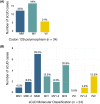
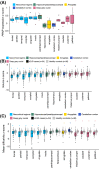
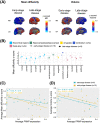
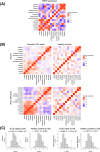
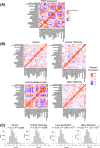

References
-
- Prusiner SB. Novel proteinaceous infectious particles cause scrapie. Science. 1982;216(4542):136‐144. - PubMed
-
- Parchi P, Giese A, Capellari S, et al. Classification of sporadic Creutzfeldt‐Jakob disease based on molecular and phenotypic analysis of 300 subjects. Ann Neurol. 1999;46(2):224‐233. - PubMed
Publication types
MeSH terms
Substances
Supplementary concepts
Grants and funding
LinkOut - more resources
Full Text Sources
Medical
